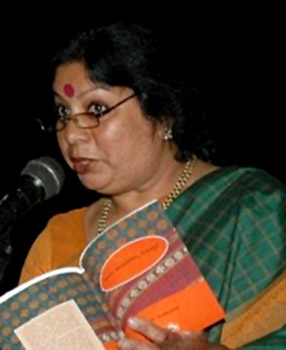 Women writers in Kannada literature have written a number of literary works that highlight the status of women in society. They try to draw out the social norms that confine women to derogatory positions in the family and society and attempt to educate the people on the various adversities faced by women. Some of the most well-known women writers in Kannada literature are discussed below.
Women writers in Kannada literature have written a number of literary works that highlight the status of women in society. They try to draw out the social norms that confine women to derogatory positions in the family and society and attempt to educate the people on the various adversities faced by women. Some of the most well-known women writers in Kannada literature are discussed below.
Triveni (1928-63) wrote novels chiefly about the emotional repressions of middle-class women. This suppression becomes necessary for the women to gain respectability in a middle-class family. But it leads to various psychological problems, as in the case of Kaveri in Sarapanjara or Malathi in Hannele Ciguridaga. Kaveri suppresses her love for one person and marries another approved of by her parents. This ultimately leads her to madness. Malathi, a widow, decides to suppress her feelings for a man in order to please her orthodox father. Triveni suggests that no change in the condition of women is possible until men recognize their problems. She is the first Kannada writer to recognize the specificity of women`s psychologies.
Rajalakshmi N. Rao`s Sangama (1954), a collection of short stories, is also about the emotional repression of women. Her "Ilia Ilia" is a story about a middle-class woman who dons the mask of a faithful wife in order to gain respectability. She now represents the class against which her former lover, a communist, rebelled. She cannot admit that she is still secretly in love with him, because she cannot break off from the society in which she now lives. The only thing left for her is to suppress her feelings and lead a double life. Parvathi, the heroine of "Phedra," another story, also resorts to daydreaming in order to give expression to her feelings. She also cannot break off from the society and live a separate life.
N. V. Bhagyalakshmi`s Berala Sandiya Baduku (1976), a collection of poems, is about the suppressed feelings of unmarried women. This was the first collection of poems that unhesitatingly told Kannada readers that unmarried Indian women suppress their feelings in order to make themselves acceptable to men in the marriage market. This collection of poems started a new trend in Kannada poetry because Bhagyalakshmi had created a new idiom to express women`s feelings.
Other important women writers are Vaidehi (1947), Tejaswini Niranjana, S. Usha, Pratibha Nandakumar, and Vina Shanteshwar (1945). The women characters that Vaidehi and Vina portray are freer emotionally than earlier. Vina`s "Higondu Kathe" portrays an unwed mother who feels that giving birth to a child is the right of every woman. Vina`s protagonist and Vaidehi`s Akku, another woman character in a story with the same title, are female characters who feel that their lives do not have to be determined by the requirements of men. The connection of this freedom to economic factors is also significant. All the characters in Triveni`s and Rajalakshmi`s fiction are housewives, dependent on their husbands for income. Vina`s and Vaidehi`s characters who show freedom of choice have independent sources of income. The difference also indicates the change that has taken place in the status of middle-class women in the last 20 years. Many of the contradictions in women`s position still need to be addressed.
There were women writers among Virashaivite saints of the tenth and eleventh centuries. Apart from Akka Mahadevi, a writer like Sule Sarikavva expressed what she felt while working as a prostitute to make a living. The women writers of recent times have been able to link themselves to this tradition of Virasaivite poetry. Women`s writings have also led to a new interest in the writings of some of the ignored aspects of Virasaivite poetry.













